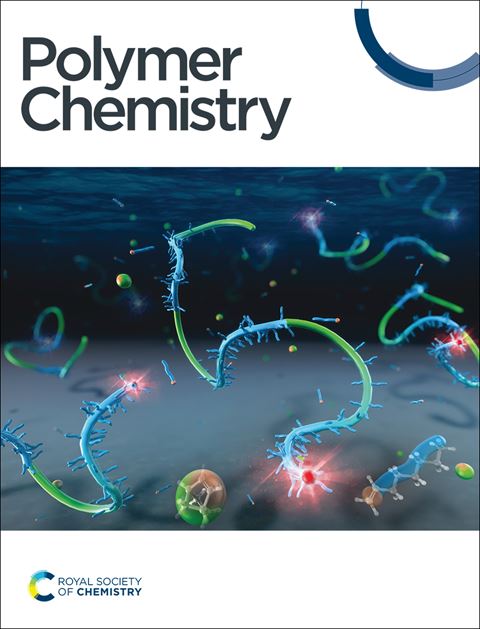Upcycling of polymer waste to closed-loop recyclable polymers
IF 3.9
2区 化学
Q2 POLYMER SCIENCE
引用次数: 0
Abstract
This study presents a novel approach aimed at developing the reclamation of waste plastics and the utilization of biobased resources to develop sustainable and closed-loop recyclable polymers. Specifically, it focuses on the integration of diol monomers, bis(2-(2-hydroxyethoxy)ethyl)terephthalamide (BHEETA) derived from the chemical recycling of the waste polyethylene terephthalate (PET), with renewable fatty acidderived diester, to produce a long hydrocarbon bearing poly(ester amide). A series of polymers was prepared under solvent-free conditions via melt transesterification of the BHEETA with dimethyl esters of varying chain lengths, specifically ranging from fourteen to eighteen backbone carbon atoms. The properties of these polymers, which include crystallinity and melting temperature, were regulated with the diester chain length. The polymers exhibited excellent thermal stability and high melting and crystallisation temperatures owing to the presence of the long hydrocarbon chain. Finally, to achieve the closed-loop circular economy, the polymer was chemically degraded to its monomers. The degraded monomers can be easily separated and purified to recover the monomers in high purity and yield (>90%). The recovered monomers were used to regenerate the polymer with near-identical material properties. This report presents a strategy to upcycle the waste polymer and the utilization of bio-derived feedstocks towards the development of a sustainable polymer. To the best of our knowledge, this is the first study to detail the closed-loop recycling of polyester amide derived from PET waste and long-chain fatty acids.将废弃聚合物升级为闭环可回收聚合物
本研究提出了一种新的方法,旨在发展废塑料的回收和生物基资源的利用,以开发可持续和闭环可回收聚合物。具体而言,它侧重于二醇单体,双(2-(2-羟基乙氧基)乙基)对苯二甲酸乙酯(BHEETA)与可再生脂肪酸衍生的二酯的整合,以生产长碳氢化合物的聚(酯酰胺)。在无溶剂条件下,通过BHEETA与不同链长的二甲酯(特别是14至18个主碳原子)的熔融酯交换反应制备了一系列聚合物。这些聚合物的结晶度和熔融温度随二酯链长度的变化而变化。由于长烃链的存在,聚合物表现出优异的热稳定性和较高的熔融结晶温度。最后,为了实现闭环循环经济,将聚合物化学降解为单体。降解后的单体易于分离纯化,回收的单体纯度高,收率达90%。回收的单体用于再生具有几乎相同材料性能的聚合物。本报告提出了一种战略,升级回收废旧聚合物和利用生物衍生原料,朝着可持续发展的聚合物。据我们所知,这是第一个详细介绍从PET废料和长链脂肪酸中提取的聚酯酰胺闭环回收的研究。
本文章由计算机程序翻译,如有差异,请以英文原文为准。
求助全文
约1分钟内获得全文
求助全文
来源期刊

Polymer Chemistry
POLYMER SCIENCE-
CiteScore
8.60
自引率
8.70%
发文量
535
审稿时长
1.7 months
期刊介绍:
Polymer Chemistry welcomes submissions in all areas of polymer science that have a strong focus on macromolecular chemistry. Manuscripts may cover a broad range of fields, yet no direct application focus is required.
 求助内容:
求助内容: 应助结果提醒方式:
应助结果提醒方式:


